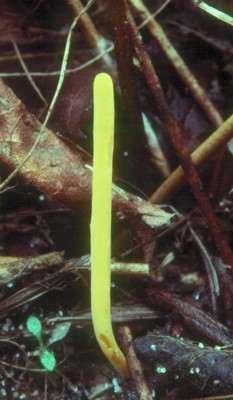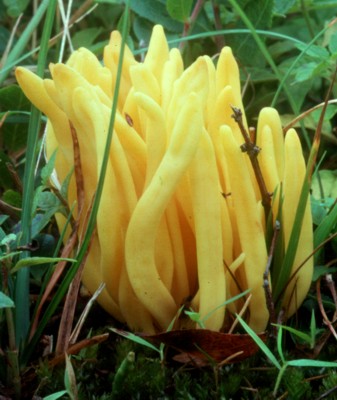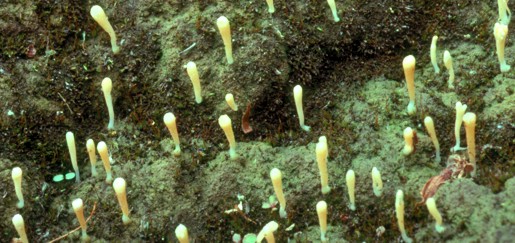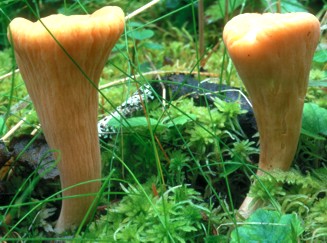Home >> Diversity and classification >> True fungi >> Dikarya >> Basidiomycota >> Agaricomycotina >> Non-gilled macrofungi >> Club and coral fungi
CLUB AND CORAL FUNGI


The club and coral fungi provide a catch-all for a variety of often only distantly related fungi. Clavaria laeticolor, shown at far-left is as simple as such fungi can be but illustrates their essential characteristics. The basidioma or fruiting body is a simple cylinder arising from the substrate, soil in this case. The basidia cover the surface of the cylinder and disperse their basidiospores by shooting them out into the environment. Clavulinopsis fusiformis at near-left is hardly more complicated except that it produces its basidiomata in clusters rather than singly. In a recent study Drs. Bryn Dentinger and David McLaughlin have shown these two fungi to be closely related and to belong to the family Clavariaceae, a sister-group to the mushroom genera Galerina and Gymnopilus. If you are a keen field mycologist you probably noticed the similarity of C. fusiformis to species of Neolecta, an only very distantly related and remarkably ancient genus of Ascomycota.


Multiclavula corynoides, below left, is a similar club fungus that forms a lichen with algae on the surface of sterile soil. Although much smaller and easy to overlook it is quite common. Note its similarity to Clavariadelphus truncatus at right, an only very distantly related species that probably forms mycorrhizae with conifers.

Unlike the club fungi the coral fungi have basidiomata that are branched, often highly so. The three species in the photo above are Clavulinopsis corniculata, Clavicorona pyxidata and Ramaria holorubella. As we have already seen with C. fusiformis, species of Clavulinopsis can have branched or unbranched basidiomata whereas species of Clavulicorona and Ramaria always have branched basidiomata. Although the three species look very similar they are in reality quite distantly related, belonging respectively to the Agaricales, Russulales and Gomphales. The advantages to a fungus in having such basidiomata is not known, but clearly members of three distinct orders of Basidiomycota have found a common solution to certain ecological demands.